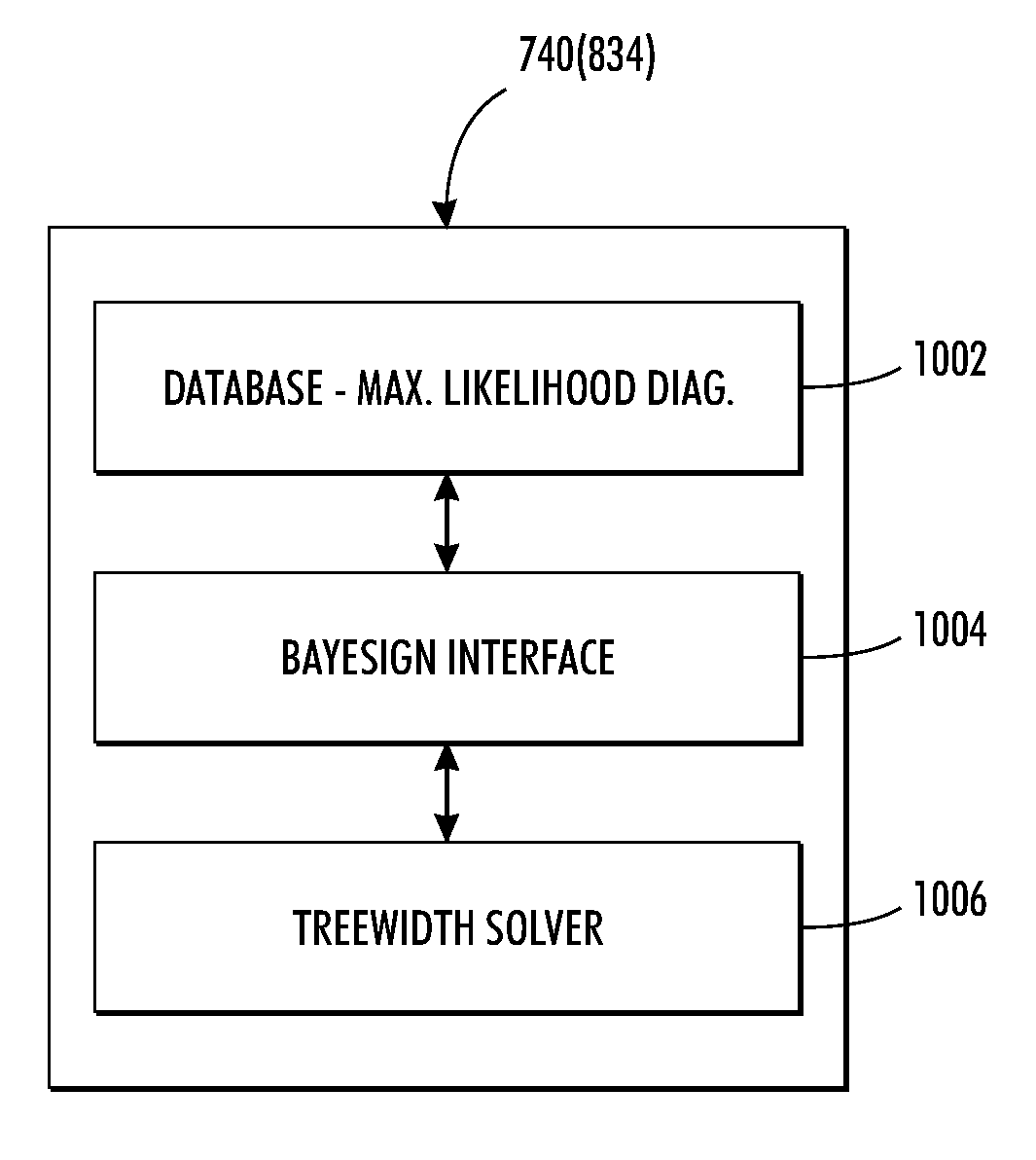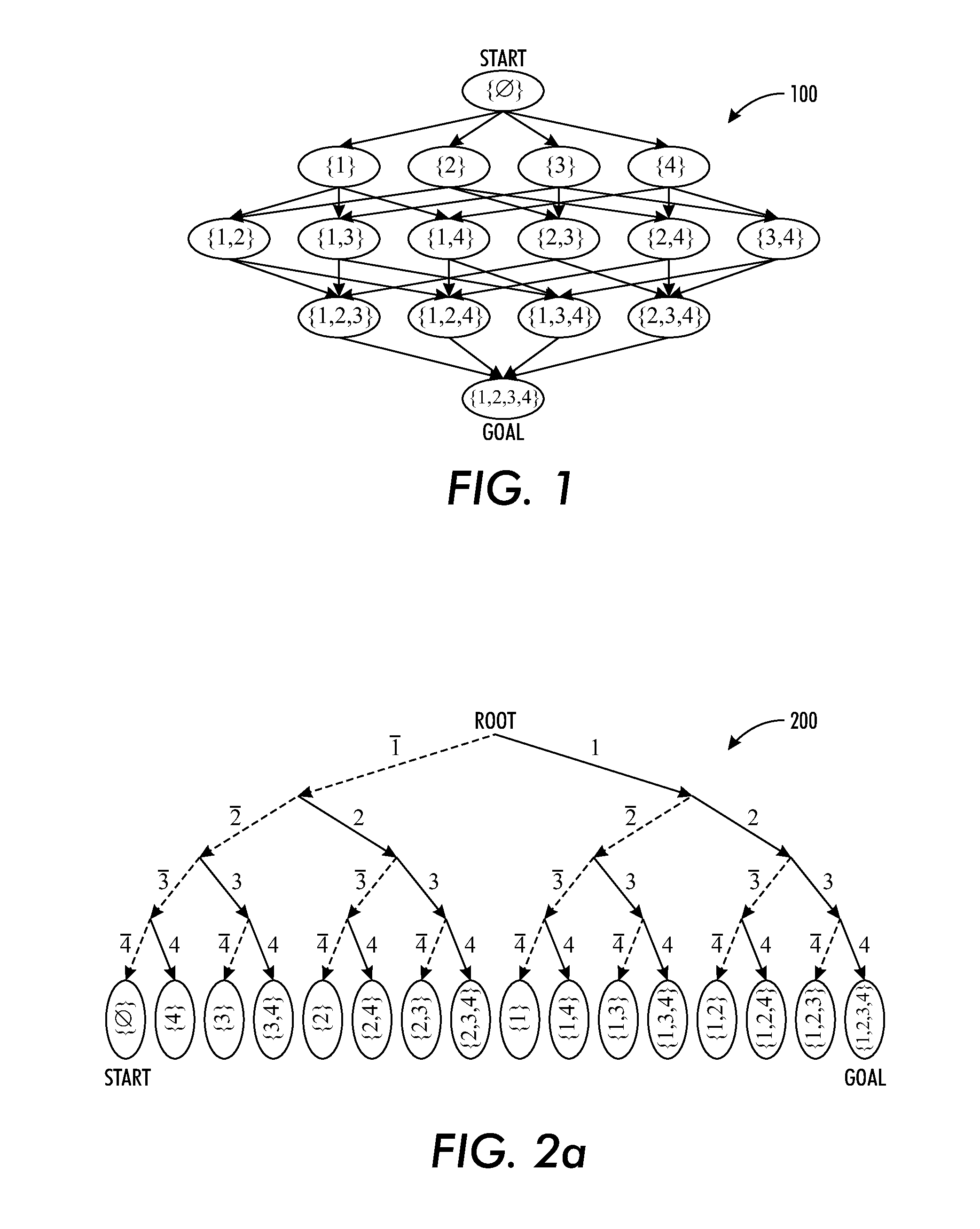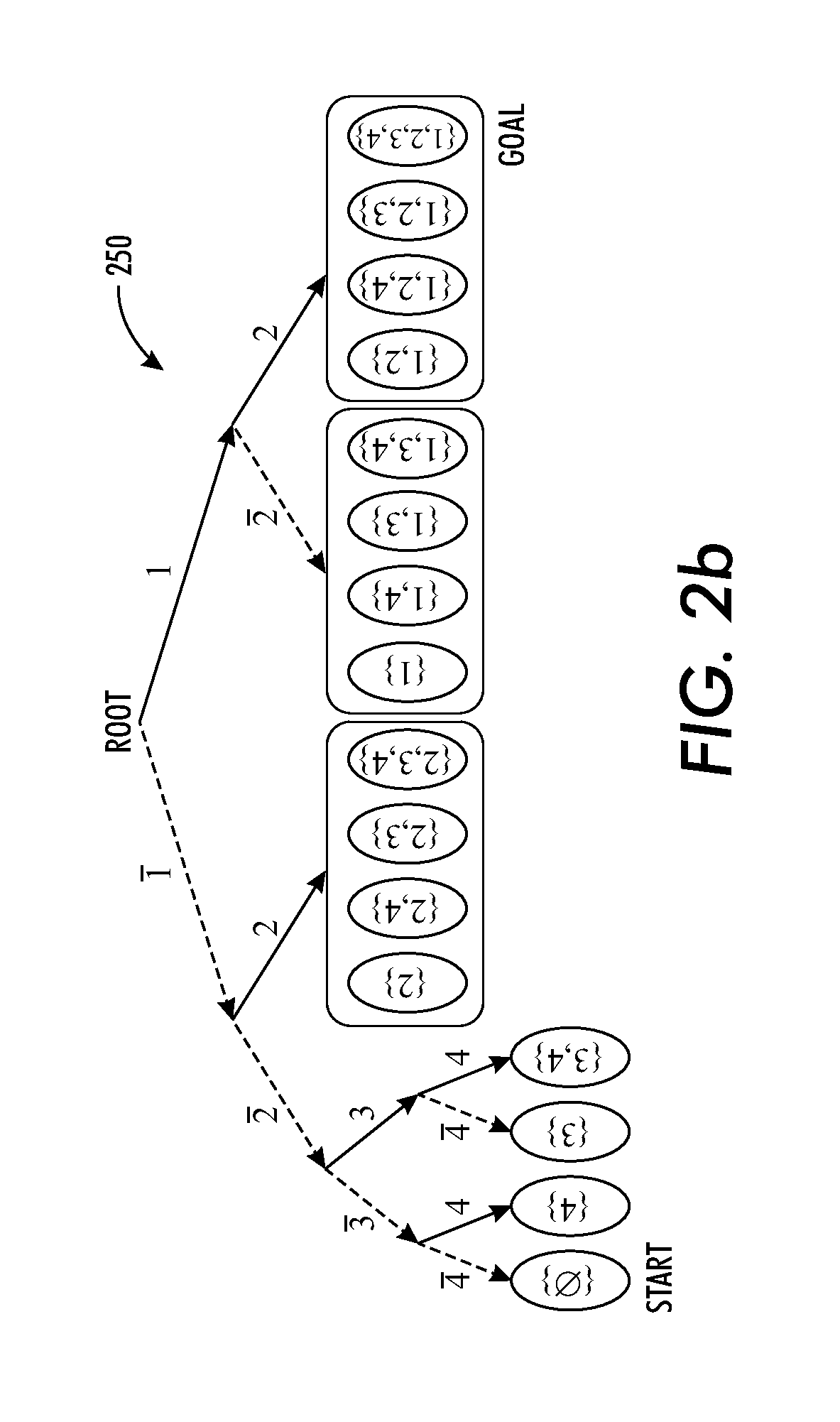System and method for combining breadth-first and depth-first search strategies with applications to graph-search problems with large encoding sizes
a search strategy and graph search technology, applied in the field of system and method for combining breadthfirst and depthfirst search strategies with applications to graph search problems with large encoding sizes, can solve the problems unacceptably slow -first search, and memory requirements, etc., and achieves the effect of increasing the size of the search space, and increasing the search volum
- Summary
- Abstract
- Description
- Claims
- Application Information
AI Technical Summary
Benefits of technology
Problems solved by technology
Method used
Image
Examples
Embodiment Construction
[0032]As noted above, breadth-first search and depth-first search are two basic search strategies upon which numerous search algorithms are built. These techniques have fundamental differences in ordering node expansions. Nonetheless, according to the presently described embodiments, there are many applications that can benefit from integrating the two strategies in a single search algorithm. For example, techniques according to the presently described embodiments can be used in Bayesian networks to solve diagnosis problems in production systems or, as a further example, image rendering (e.g. printing and / or copying) systems.
[0033]The presently described embodiments describe a new way to integrate breadth-first and depth-first strategies in a single search technique or routine that combines the complementary strengths of both strategies to achieve significantly improved speed over either strategy used alone.
[0034]Referring now to FIG. 1, the search space 100 of optimal treewidth for...
PUM
 Login to View More
Login to View More Abstract
Description
Claims
Application Information
 Login to View More
Login to View More - R&D
- Intellectual Property
- Life Sciences
- Materials
- Tech Scout
- Unparalleled Data Quality
- Higher Quality Content
- 60% Fewer Hallucinations
Browse by: Latest US Patents, China's latest patents, Technical Efficacy Thesaurus, Application Domain, Technology Topic, Popular Technical Reports.
© 2025 PatSnap. All rights reserved.Legal|Privacy policy|Modern Slavery Act Transparency Statement|Sitemap|About US| Contact US: help@patsnap.com



